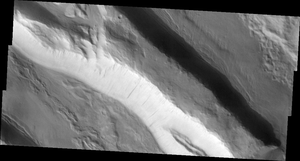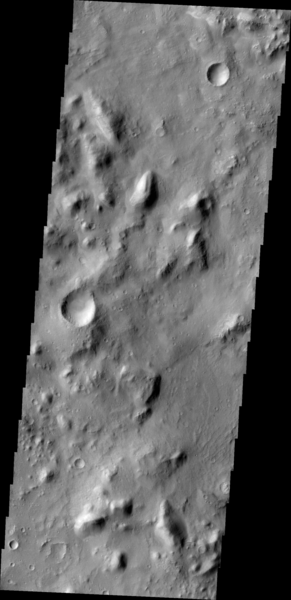THEMIS celebrates a decade's discoveries
Ten years ago, on February 19, 2002, the Thermal Emission Imaging System (THEMIS), a multi-band camera on NASA's Mars Odyssey orbiter, began scientific operations at the Red Planet. Since then the camera has circled Mars nearly 45,000 times and taken more than half a million images at infrared and visible wavelengths.
Other News & Discoveries

THEMIS' first science image: Acheron Fossae
This was the first science image taken by THEMIS, February 19, 2002. It shows an area in Acheron Fossae, north of the giant volcano Olympus Mons, where mesas and valleys lie bounded by geologic faults. The image (V00816002) shows an area 11 x 6 miles (19 x 9 km); the smallest details visible in the original image are 59 feet (18 meters) wide.
NASA/JPL-Caltech/Arizona State University
Download Original
THEMIS' 10th anniversary image: Nepenthes Mensae
Taken on THEMIS' 10th anniversary, this image (V45173011), shows a region in Nepenthes Mensae, part of Terra Cimmeria. The view depicts a knobby landscape where the southern highlands are breaking up as the terrain descends into the northern lowlands. The image covers 11 x 32 miles (19 x 52 km); the smallest details visible in the original image are 59 feet (18 meters) wide.
NASA/JPL-Caltech/Arizona State University
Download Original